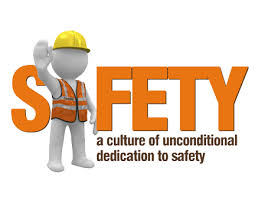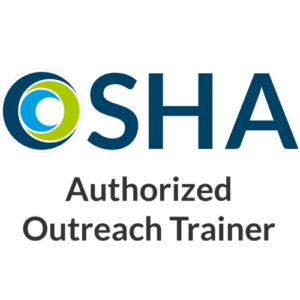 As the cannabis industry becomes more mainstream, OSHA (Occupational Safety and Health Administration) will be making sure that cannabis business employers are creating safe workplaces, just as any other industry.
As the cannabis industry becomes more mainstream, OSHA (Occupational Safety and Health Administration) will be making sure that cannabis business employers are creating safe workplaces, just as any other industry.
And while cannabis businesses don’t appear to be high risk in safety, they are a novelty and there are many OSHA laws and regulations that aren’t being addressed.
Even though the sale of cannabis isn’t yet federally sanctioned, OSHA laws, both on the federal- and state level are still enforceable as they apply to worker safety.
The OSHA Outreach Training Program provides workers with basic and more advanced training about common safety and health hazards on the job. Employees receive an OSHA 10-hour or 30-hour course completion card at the end of the training.
The Outreach Training Program is voluntary. Its purpose is to promote workplace safety and health by making cannabis industry workers more knowledgeable about workplace hazards as well as their rights.
Employers are responsible for providing additional training for their workers on specific hazards of their job as noted in many OSHA standards.
Designed For Workers
 The OSHA Outreach Training Program provides training on the recognition, avoidance, abatement, and prevention of workplace hazards. Outreach classes also provide overview information regarding OSHA, including workers’ rights, employer responsibilities, and how to file a complaint.
The OSHA Outreach Training Program provides training on the recognition, avoidance, abatement, and prevention of workplace hazards. Outreach classes also provide overview information regarding OSHA, including workers’ rights, employer responsibilities, and how to file a complaint.
Program Benefits
- Promotes safety culture through peer training.
- Training is intended to be participatory, using hands-on activities.
- Trainers can tailor the training topics based on the specific needs of their audience.
- Outreach training content includes hazard recognition and avoidance, workers’ rights, employer responsibilities, and how to file a complaint; it emphasizes the value of safety and health to workers, including young workers.
- Outreach training is available in languages other than English (Spanish, Polish, etc.).
10-Hour & 30-Hour Programs
The 10-hour training program is primarily intended for entry-level cannabis industry workers. The 30-hour training program is intended to provide managers and supervisors with some safety responsibilities with a greater depth and variety of training.
All outreach training is intended to cover an overview of the hazards a cannabis industry worker may encounter on a job site. Training emphasizes hazard identification, avoidance, control, and prevention, not OSHA standards.
Training Delivery Requirements
Training that does not comply with the requirements listed below will not be recognized and trainers will not be given course completion cards.
1) Students are defined as those attending a class.
2) Attendance. To receive a course completion card, the student must attend the entire class and complete all class requirements, including all requisite topics and the minimum number of contact hours.
3) Student Contact Hours. Student contact hours refer to time spent covering course content. Student contact hours do not include breaks for meals or other breaks, or time spent on administrative matters such as attendance or test.
4) Daily Student Contact Hour Limit. Training is limited to a maximum of 7.5 student contact hours conducted per calendar day. Therefore:
a) 10-Hour classes must take a minimum of two (2) calendar days
a) 30-Hour classes must take a minimum of four (4) calendar day
5) Break and Meal Periods. At a minimum, a 10-minute break period must be provided after every two (2) consecutive hours of instruction. A meal period of at least 30 minutes must be provided for each training session that lasts for more than six (6) hours. The break and meal periods are intended as instructional breaks, training is not allowed during these times.
6) Class Duration
a) Outreach trainers may break the class into time segments to deliver the training over multiple days, weeks, or months.
b) Each Outreach Training Program must be completed within six (6) months of its start date.
7) Class Style
a) Outreach Training Program training must include workshops, case studies, exercises, and demonstrations that involve student participation and interaction.
b) Video cannot comprise more than 25% of the instructional time spent in the Outreach Training Program training.
8) Student Verification. Outreach trainers must employ every reasonable effort to verify the identity of each individual attending their Outreach Training Program training.
9) Providing 10-Hour Students Additional Training to Receive a 30-Hour Card. Outreach trainers may provide 20 additional hours to 10-hour students and receive 30-hour cards.
10) Stand-Alone Training. Outreach Training Program courses are considered stand-alone courses and must not be conducted as part of, and/or in conjunction or combination with other Outreach Training Program training. This does not prevent organizations from developing wrap-around coursework that is not part of the Outreach Training Program.
Minimum & Maximum Class Sizes
OSHA intends for Outreach Training Program training to be participatory. For this reason, OSHA requires Outreach Training Program trainers to teach at least three (3) students per class and are limited to a maximum of forty (40) students.
Alternative Training Methods
 Outreach Training Program classes must be conducted in person (unless a written exception is obtained from OSHA or the trainer’s Authorizing Training Organization).
Outreach Training Program classes must be conducted in person (unless a written exception is obtained from OSHA or the trainer’s Authorizing Training Organization).
1) Online Training. Authorized Outreach trainers may not conduct online Outreach Training Program classes. Only OSHA-authorized online Outreach training providers may conduct online Outreach Training Program classes.
2) Video Conferencing. OSHA’s preferred delivery method is through standard in-person classroom instruction. Training conducted through a remote site video conferencing or other live, interactive instruction that is not standard in-person classroom instruction is not allowed.
Let us know what you think.




Responses
The final phase of New York City’s training requirements for workers, marks a pivotal moment in prioritizing safety within the industry. The comprehensive approach to training is commendable, ensuring that construction professionals are equipped with the knowledge and skills needed to navigate the complexities of their work. As the city takes this bold step to enhance safety standards, it’s crucial for construction workers to embrace the specialized courses. These programs become indispensable resources for ensuring compliance and fostering a culture of safety. Here’s to the continued commitment to elevating safety standards in the landscape of New York City.